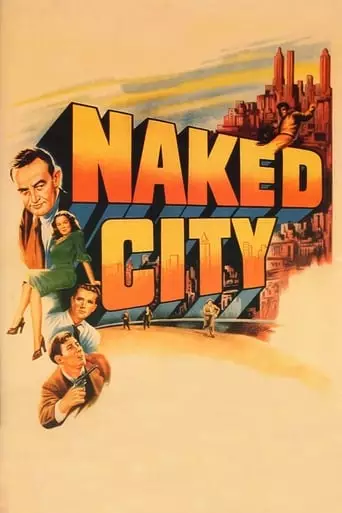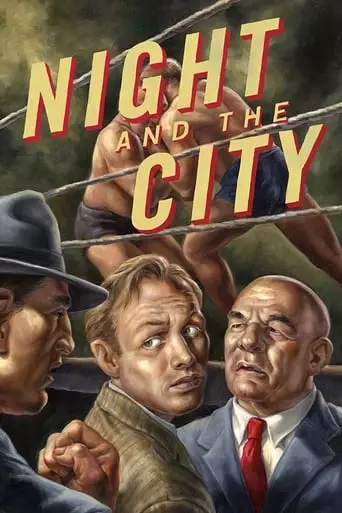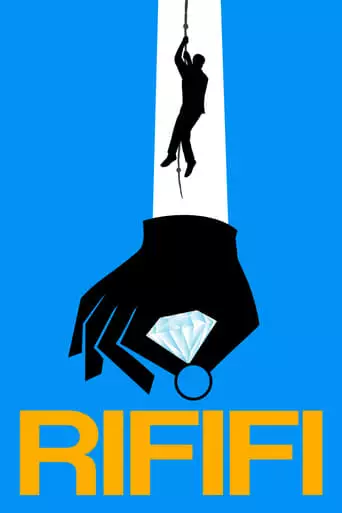Arthur Simon Simpson is a small-time crook biding his time in Greece. One of his potential victims turns out to be a gentleman thief planning to steal the emerald-encrusted dagger […]

Arthur Simon Simpson is a small-time crook biding his time in Greece. One of his potential victims turns out to be a gentleman thief planning to steal the emerald-encrusted dagger […]

Nick Garcos comes back from his tour of duty in World War II planning to settle down with his girlfriend, Polly Faber. He learns, however, that his father was recently […]

Timeworn Joe Collins and his fellow inmates live under the heavy thumb of the sadistic, power-tripping guard Captain Munsey. Only Collins’ dreams of escape keep him going, but how can […]

The Naked City portrays the police investigation that follows the murder of a young model. A veteran cop is placed in charge of the case and he sets about, with […]

Londoner Harry Fabian is a second-rate con man looking for an angle. After years of putting up with Harry’s schemes, his girlfriend, Mary, becomes fed up when he taps her […]

Out of prison after a five-year stretch, jewel thief Tony turns down a quick job his friend Jo offers him, until he discovers that his old girlfriend Mado has become […]
Jules Dassin: The Master of Noir and Exile
Jules Dassin (1911–2008) was a groundbreaking filmmaker whose career spanned continents and genres, leaving an indelible mark on cinema. Renowned for his mastery of film noir and his later exploration of European art cinema, Dassin’s work is characterized by its visual style, moral complexity, and empathetic portrayal of outsiders.
From his iconic American noirs like The Naked City (1948) and Rififi (1955) to his vibrant European films such as Never on Sunday (1960), Dassin’s ability to reinvent himself in the face of adversity is a testament to his resilience and artistry.
Early Life and Career Beginnings
Julius Dassin was born on December 18, 1911, in Middletown, Connecticut, to a family of Russian-Jewish immigrants. Raised in Harlem, New York, he initially pursued acting before transitioning to directing.
Dassin began his career in Hollywood in the 1940s, working under the mentorship of Alfred Hitchcock and Garson Kanin. His early films included a mix of comedies and dramas, but it was his foray into film noir that established his reputation as a director of exceptional talent.
The Noir Years
Dassin’s work in the late 1940s and early 1950s solidified his place as one of the preeminent directors of film noir, a genre known for its dark, moody aesthetics and morally ambiguous characters.
Brute Force (1947)
Starring Burt Lancaster, Brute Force is a brutal prison drama that explores themes of oppression and rebellion. The film’s stark visuals and intense performances marked Dassin as a director unafraid to tackle difficult subject matter.
The Naked City (1948)
A pioneering example of the police procedural, The Naked City was shot on location in New York City, giving it a documentary-like realism. Its innovative cinematography and use of the urban landscape set a new standard for crime dramas.
Night and the City (1950)
Set in postwar London, this tale of a small-time hustler’s downfall is a quintessential noir, featuring Richard Widmark in one of his most memorable roles. The film’s shadowy visuals and relentless tension make it a standout in Dassin’s oeuvre.
Blacklisting and Exile
Dassin’s Hollywood career was abruptly derailed in 1950 when he was blacklisted during the Red Scare. Accused of communist sympathies, he was unable to find work in the United States and moved to Europe.
Despite the challenges of exile, Dassin’s creativity flourished abroad. His ability to adapt to new environments and embrace different filmmaking traditions allowed him to reinvent himself as an international auteur.
European Renaissance
Rififi (1955)
Dassin’s first major European film, Rififi, is a French crime thriller that remains one of the greatest heist films ever made. The film’s centerpiece—a nearly silent 30-minute heist sequence—is a masterclass in tension and precision.
Rififi earned Dassin the Best Director award at the Cannes Film Festival, reestablishing his reputation and proving his resilience in the face of adversity.
Never on Sunday (1960)
Set in Greece and starring Melina Mercouri (who would become Dassin’s wife and muse), Never on Sunday is a vibrant romantic comedy about a free-spirited Greek prostitute and an American intellectual. The film’s infectious energy and charm won Mercouri the Best Actress award at Cannes and earned Dassin an Academy Award nomination for Best Original Screenplay.
Topkapi (1964)
A colorful and playful caper film, Topkapi showcased Dassin’s versatility and flair for suspenseful storytelling. The film’s intricate heist sequence influenced countless filmmakers and remains a classic of the genre.
Themes and Style
Dassin’s films often explore themes of morality, survival, and the struggles of the marginalized. His protagonists are frequently outsiders—whether they are criminals, rebels, or dreamers—navigating hostile worlds.
Stylistically, Dassin’s work is notable for its:
Visual Boldness: From the chiaroscuro lighting of his noirs to the vibrant colors of his European films, Dassin’s cinematography is always striking.
Realism: His use of location shooting and naturalistic performances lend his films an authenticity that draws audiences into his worlds.
Emotional Depth: Whether exploring the darkness of noir or the exuberance of Mediterranean life, Dassin’s films resonate with humanity and empathy.
Legacy and Recognition
Jules Dassin’s career is a testament to resilience and reinvention. Despite being blacklisted, he created some of the most enduring films in cinema history, influencing generations of filmmakers.
In addition to his artistic achievements, Dassin’s partnership with Melina Mercouri led to significant cultural and political contributions. The couple became advocates for the return of the Parthenon Marbles to Greece, with Mercouri serving as Greece’s Minister of Culture.
Conclusion
Jules Dassin’s life and work exemplify the power of perseverance and artistic integrity. From the shadowy streets of noir to the sunlit landscapes of Europe, his films continue to captivate audiences with their style, intelligence, and heart.
As a director, Dassin bridged cultures and genres, leaving a legacy that celebrates the resilience of the human spirit and the enduring power of cinema.